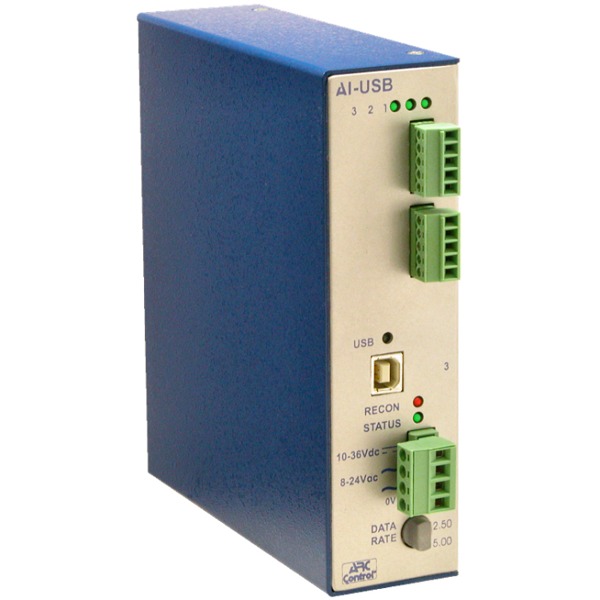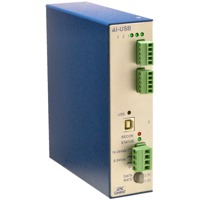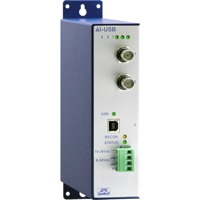AI-USB Series - ARCnet Hub & USB Adapter
The AI-USB hub alters how you connect to an ARCNET network. It gives you easy access to the network via a PC without removing the cover. It helps to prevent any service technician aggravation because it eliminates the installation of an ARCNET card in the PC.
This is an active hub with similar hub functionality as an AI Series hub, but it allows access to the Universal Serial Bus (USB) to a host PC. It has three ports — two external and one internal. The internal port has a connection to a USB adapter (network interface module) resident in the AI-USB. The USB connection is brought out to the front panel so a laptop or desktop computer can gain Plug-and-Play (PnP) access to an ARCNET network.
This unit conforms to the high-speed USB 2.0 standard. It is a very fast and convenient method of accessing an ARCNET network without the need of removing a cover and installing a network interface module into a computer.
Today, most computers are equipped with a USB port so it is only necessary to make a connection between the computer and the AI-USB. It also operates with the earlier lower-speed USB 1.1 standard.
An ideal application for the AI-USB is temporary access to an ARCNET network by simply hooking from a laptop computer using its USB port. With the AI-USB permanently connected to the ARCNET network, field wiring is not disturbed when attaching the USB cable. Thus, an ARCNET network can be monitored, stations configured and troubleshooting can be accomplished with minimal disruption to the network. With two external hub ports, the AI-USB can be inserted between two bus segments and function as a bus extender. Models are available for coaxial bus, twisted-pair bus and both AC- and DC-coupled EIA-485.




